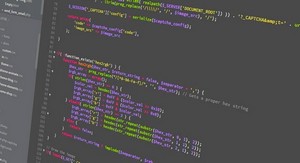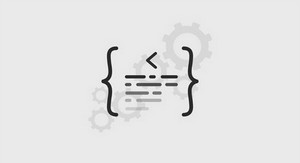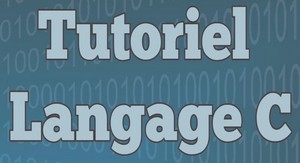Preface
Like any human language, C++ provides a way to express concepts. If successful, this medium of expression will be significantly easier and more flexible than the alternatives as problems grow larger and more complex.
You can’t just look at C++ as a collection of features; some of the features make no sense in isolation. You can only use the sum of the parts if you are thinking about design, not simply coding. And to understand C++ in this way, you must understand the problems with C and with programming in general. This book discusses programming problems, why they are problems, and the approach C++ has taken to solve such problems. Thus, the set of features I explain in each chapter will be based on the way that I see a particular type of problem being solved with the language. In this way I hope to move you, a little at a time, from understanding C to the point where the C++ mindset becomes your native tongue.
Throughout, I’ll be taking the attitude that you want to build a model in your head that allows you to understand the language all the way down to the bare metal; if you encounter a puzzle you’ll be able to feed it to your model and deduce the answer. I will try to convey to you the insights which have rearranged my brain to make me start “thinking in C++.”
What’s new in the second edition
This book is a thorough rewrite of the first edition to reflect all the changes introduced in C++ by the finalization of the ANSI/ISO C++ Standard. The entire text present in the first edition has been examined and rewritten, sometimes removing old examples, often changing existing examples and adding new ones, and adding many new exercises. Significant rearrangement and re-ordering of the material took place to reflect the availability of better tools and my improved understanding of how people learn C++. A new chapter was added which is a rapid introduction to the C concepts and basic C++ features for those who haven’t been exposed. The CD ROM bound into the back of the book contains a seminar which is an even gentler introduction to the C concepts necessary to understand C++ (or Java). It was created by Chuck Allison for my company (MindView, Inc.) and it’s called “Thinking in C: Foundations for Java and C++.”
What’s in Volume 2 of this book
The completion of the C++ Standard also added a number of important new libraries such as stringand the Standard Template Library (STL) as well as new complexity in templates. These and other more advanced topics have been relegated to Volume 2 of this book, including issues like multiple inheritance, exception handling, design patterns and topics about building stable systems and debugging them.
How to get Volume 2
Just like the book that you currently hold, Thinking in C++, Volume 2 is freely downloadable in its entirety from my web site at www.BruceEckel.com. The final version of Volume 2 will be completed and printed in late 2000 or early 2001.
The web site also contains the source code for both the books, along with updates and information about CD ROMs, public seminars, and in-house training, consulting, mentoring and walk-throughs.
Prerequisites
In the first edition of this book, I decided to assume that someone else had taught you C and that you have at least a reading level of comfort with it. My primary focus was on simplifying what I found difficult – the C++ language. In this edition I have added a chapter that is a very rapid introduction to C, along with the Thinking in Cseminar-on-CD, but still assuming that you have some kind of programming experience already. In addition, just as you learn many new words intuitively by seeing them in context in a novel, it’s possible to learn a great deal about C from the context in which it is used in the rest of the book.
Learning C++
I clawed my way into C++ from exactly the same position as I expect many of the readers of this book will: As a programmer with a very no-nonsense, nuts-and-bolts attitude about programming. Worse, my background and experience was in hardware-level embedded programming, where C has often been considered a high-level language and an inefficient overkill for pushing bits around. I discovered later that I wasn’t even a very good C programmer, hiding my ignorance of structures, malloc( )& free( ), setjmp( )& longjmp( ),
Part 1: The Standard C++ Library
Standard C++ not only incorporates all the Standard C libraries, with small additions and changes to support type safety, it also adds libraries of its own. These libraries are far more powerful than those in Standard C; the leverage you get from them is analogous to the leverage you get from changing from C to C++.
This section of the book gives you an in-depth introduction to the most important portions of the Standard C++ library.
The most complete and also the most obscure reference to the full libraries is the Standard itself. Somewhat more readable (and yet still a self-described “expert’s guide”) is Bjarne Stroustrup’s 3rd Edition of The C++ Programming Language(Addison-Wesley, 1997).
Another valuable reference is the 3rd edition of C++ Primer, by Lippman & Lajoie. The goal of the chapters in this book that cover the libraries is to provide you with an encyclopedia of descriptions and examples so you’ll have a good starting point for solving any problem that requires the use of the Standard libraries. However, there are some techniques and topics that are used rarely enough that they are not covered here, so if you can’t find it in these chapters you should reach for the other two books; this book is not intended to replace those but rather to complement them. In particular, I hope that after going through the material in the following chapters you’ll have a much easier time understanding those books.
Library overview
[[ Still needs work ]]
The first chapter in this section introduces the Standard C++ stringclass, which is a powerful tool that simplifies most of the text processing chores you might have to do. The stringclass may be the most thorough string manipulation tool you’ve ever seen. Chances are, anything you’ve done to character strings with lines of code in C can be done with a member function call in the string class, including append( ), assign( ), insert( ), remove( ), replace( ), resize( ), copy( ), find( ), rfind( ), find_first_of( ), find_last_of( ), find_first_not_of( ), find_last_not_of( ), substr( ), and compare( ). The operators =, +=, and [ ]are also overloaded to perform the intuitive operations. In addition, there’s a “wide” wstringclass designed to support international character sets. Both stringand wstring(declared in <string>, not to be confused with C’s <string.h>, which is, in strict C++, <cstring>) are created from a common template class called basic_string. Note that the string classes are seamlessly integrated with iostreams, virtually eliminating the need for you to ever use strstream…
C++ Standard libraries and advanced topics (2169 KO) (Cours PDF)


